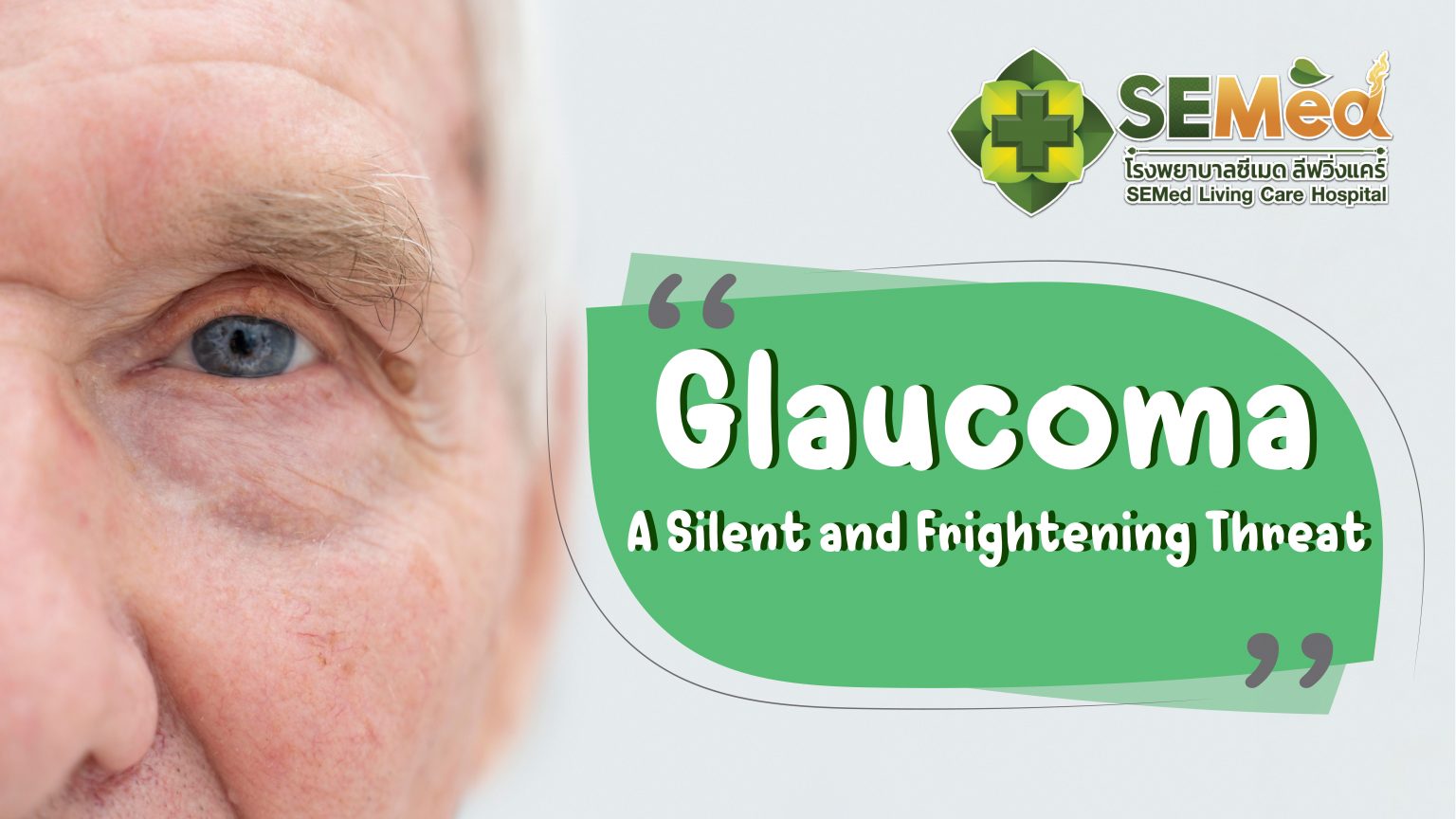
Glaucoma…The Silent Threat
Glaucoma is one of the leading causes of permanent vision loss. In Thailand, over 2 million people suffer from glaucoma.
Symptoms
In the early stages, most patients do not show any symptoms, making it difficult for them to realize they have glaucoma. Often, it is accidentally detected in routine eye exams. Over time, vision gradually narrows until it reaches the point of blurred vision, which is usually noticed in the advanced stages of the disease. Without treatment, glaucoma can ultimately lead to blindness.
In cases of acute angle-closure glaucoma, however, symptoms may include severe eye pain, headache, blurred vision, red eyes, light sensitivity, and tearing. This condition requires urgent medical attention from an ophthalmologist.
Causes
Glaucoma results from abnormalities in the circulation of the eye’s aqueous humor (fluid within the eye). It may be due to overproduction or insufficient drainage of this fluid. When fluid accumulates, intraocular pressure rises, leading to optic nerve cell damage.
Typically, normal intraocular pressure ranges between 5-22 mmHg. If intraocular pressure exceeds 22 mmHg, it is considered elevated and poses a risk for glaucoma.
Types
Glaucoma can be classified by various factors:
- By angle type: open-angle glaucoma and angle-closure glaucoma.
- By cause: Primary glaucoma (with no specific cause) and secondary glaucoma (caused by other eye conditions, such as trauma, intraocular inflammation, cataracts, or diabetic retinopathy).
- By progression: acute glaucoma and chronic glaucoma.
Treatment
Since glaucoma causes permanent damage to the optic nerve, the cells that die cannot regenerate. Therefore, treatment focuses on maintaining existing vision and preventing further damage to the optic nerve. The treatment options include:
Medication: Medication is the initial and often most effective treatment. The goal is to lower intraocular pressure to prevent further optic nerve damage. Patients must use eye drops consistently, sometimes in combination, with regular follow-up visits for dose adjustment and monitoring of side effects.
Laser Treatment: This option depends on the type and stage of glaucoma. Laser procedures include:
- Laser Peripheral Iridotomy (LPI): Used to treat angle-closure glaucoma and prevent acute attacks.
- Selective Laser Trabeculoplasty (SLT): Used for open-angle glaucoma, either as a primary treatment or in addition to eye drops if they are insufficient.
- Laser Cyclophotocoagulation: Applied in cases where other treatments have proven ineffective.
Surgery: Surgery is necessary when intraocular pressure cannot be controlled with medications or laser treatment. Surgical options include:
- Trabeculectomy: Creating a new drainage pathway within the eye.
- Glaucoma Drainage Device (GDD): Implanting a drainage tube in the eye.
Alternative treatments like eye massage, herbal remedies, or dietary supplements are not standard, evidence-based treatments. They may not only be ineffective but also potentially harmful, especially in advanced glaucoma.
Risk Factors
Those at high risk for glaucoma should have annual screenings with an ophthalmologist. High-risk groups include:
- Individuals over 40 years old.
- Those with a direct family history of glaucoma (parent, sibling) over 35 years old.
- Those with a history of eye trauma.
- Regular users of steroids.
- Individuals with high myopia (nearsightedness) or high hyperopia (farsightedness).
- People with diabetes.

